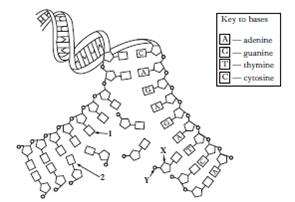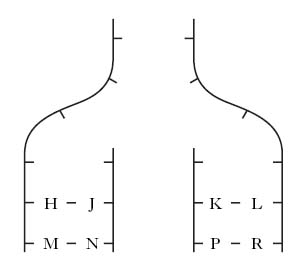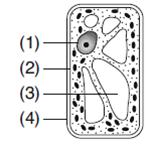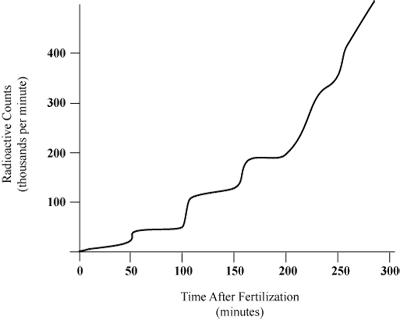| 2. | If a DNA molecule contains 10,000 bases, of which 18% are thymine (T), then the number of cytosine (C) molecules present would be | |
| A. | 1800 | |
| B. | 3200 | |
| C. | 6400 | |
| D. | 8200 | |
| 3. | If a DNA molecule contains 4000 bases and 1200 of these are adenine (A), then the percentage of the bases which woudlbe guanine (G) would be | |
| A. | 12 | |
| B. | 20 | |
| C. | 28 | |
| D. | 30 | |
| 4. | An mRNA template is | |
| A. | copied from protein | |
| B. | translated by protein | |
| C. | copied from DNA | |
| D. | translated by DNA | |
| 5. | What molecule controls the order in which amino acids are added to a growing protein? | |
| A. | DNA molecules | |
| B. | mRNA molecules | |
| C. | amino acids | |
| D. | ribosomes | |
| E. | mitochondria | |
| 6. | A fragment of DNA was found to have 120 guanine bases and 60 adenine bases. What is the total number of sugar molecules in this fragment? | |
| A. | 60 | |
| B. | 90 | |
| C. | 180 | |
| D. | 360 | |
| 8. | The diagram below shows part of a DNA molecule during replication. Identify part X
|
||||||||||||
| A. | base | B. | phosphate | C. | sugar | D. | nucleotide | ||||||
| 9. | The diagram below shows part of a DNA molecule during replication. Name base 1
|
||||||||||||
| A. | A (adenine) | B. | T (thymine) | C. | G (guanine) | D. | C (cytosine) | ||||||
| 10. | The diagram shows DNA during replication. Base H represents thymine and base M represents guanine. Which letters represent the base cytosine?
|
||||||||||||
| A. | J and K | B. | J and L | C. | N and P | D. | N and R | ||||||
| 11. | A section of a DNA molecule contains 300 bases. Of these bases, 90 are adenine. How many cytosine bases would this section of DNA contain? | |
| A. | 60 | |
| B. | 90 | |
| C. | 120 | |
| D. | 180 | |
| 12. | Tissue samples taken from the heart and stomach of a grasshopper would be expected to have the same — | |
| A. | cell shape | |
| B. | cell size | |
| C. | mRNA | |
| D. | DNA | |
| 13. | Amino acids link together by peptide bonds to form proteins. In which part of the cell would this process occur | |
| A. | Mitochondrion | |
| B. | Ribosome | |
| C. | Nucleus | |
| D. | Chloroplast | |
| 14. | Which of these is most responsible for carrying coded information from the nucleus? | |
| A. | The cell membrane | |
| B. | The ribosomes | |
| C. | mRNA | |
| D. | DNA | |
| 15. | Proteins are formed from monomers (subunits) called — | |
| A. | amino acids | |
| B. | phospholipids | |
| C. | sugars | |
| D. | nucelotides | |
| 16. | A cell with numerous ribosomes is probably specialized for — | |
| A. | enzyme storage | |
| B. | energy production | |
| C. | cell division | |
| D. | protein synthesis | |
| 17. | The parts of DNA that provide the code for proteins are the — | |
| A. | sugars | |
| B. | phosphates | |
| C. | weak bonds | |
| D. | bases | |
| 18. | Which cell structure contains information needed for protein synthesis?
|
||||||||||||
| A. | 1 | B. | 2 | C. | 3 | D. | 4 | ||||||
| 19. | Which sequence best represents the relationship between DNA and the characteristics or traits of an organism?
|
||||||||||||
| A. |  |
B. |  |
C. |  |
D. |  |
||||||
| 21. | Proteins have different functions. Which of the following statements identifies a protein and its function? | |
| A. | Hormones carry oxygen around the body. | |
| B. | Enzymes carry chemical messages around the body. | |
| C. |
Antibodies defend the body against disease.
|
|
| D. |
Cellulose provides strength and structure to a plant cell wall.
|
|





